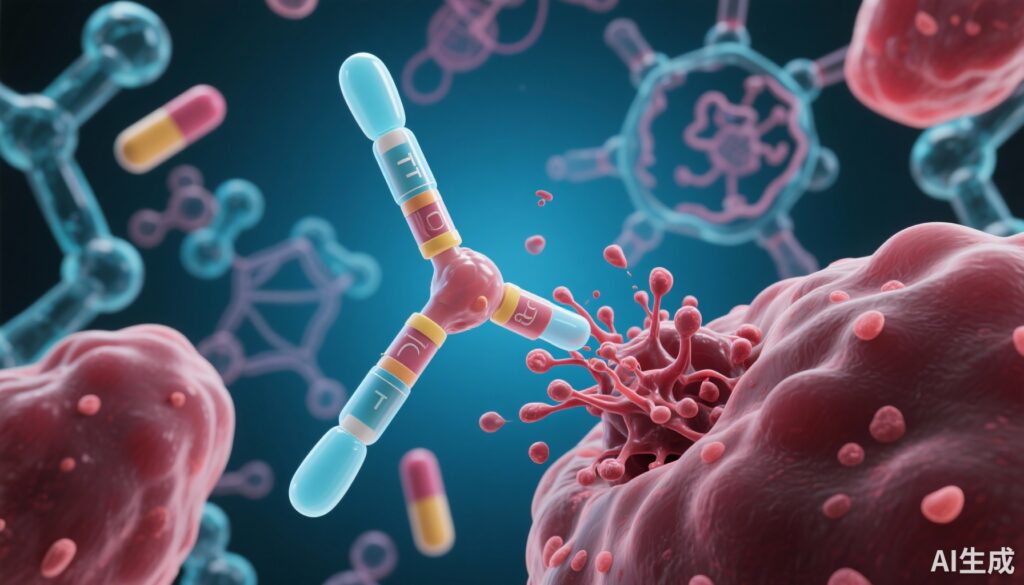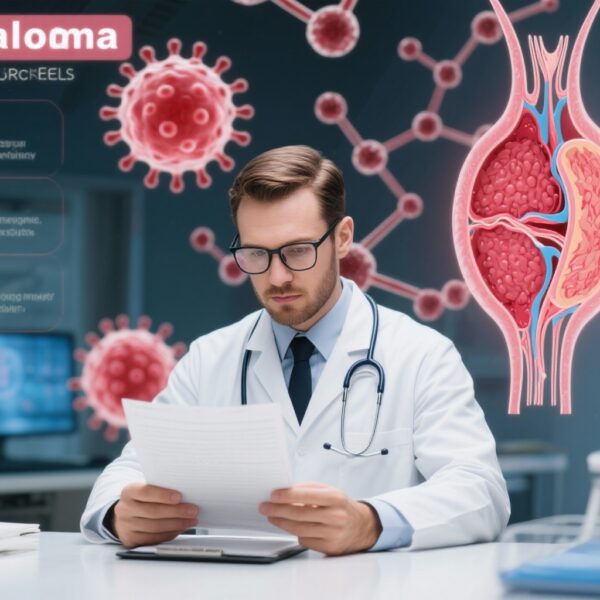Highlight
Preclinical studies reveal that glofitamab, a CD20×CD3 T-cell engager, shows potent synergistic antitumor activity when combined with standard chemotherapy regimens such as R-CHP-Pola and gemcitabine/oxaliplatin, effectively overcoming tumor antigen heterogeneity and immune evasion in non-Hodgkin lymphoma (NHL) models. Novel chemotherapy-free combinations incorporating costimulatory molecules and immune checkpoint inhibitors further amplify glofitamab efficacy, sustaining T-cell functionality and addressing T-cell exhaustion. These findings provide a strong foundation for tailored combination strategies to enhance clinical outcomes in NHL.
Background: Unmet Needs in Non-Hodgkin Lymphoma Treatment
Non-Hodgkin lymphoma encompasses a heterogeneous group of lymphoid malignancies with varying clinical courses. Standard therapies, including chemoimmunotherapy, have improved survival; however, relapse and resistance remain substantial challenges. T-cell engagers (TCEs), designed to redirect T cells to tumor cells by simultaneously binding CD3 on T cells and tumor-associated antigens, have emerged as transformative therapies in relapsed/refractory hematologic malignancies. Glofitamab is a bispecific antibody targeting CD20 on B cells and CD3 on T cells, recently approved for refractory NHL, representing a novel immunotherapeutic frontier.
Despite encouraging clinical activity, resistance mechanisms such as heterogeneous CD20 expression, immune escape, and T-cell exhaustion limit TCE efficacy. Addressing these factors through rational combination approaches is critical to improve durable responses and broaden clinical benefit, particularly in frontline and salvage settings.
Study Design and Methodology
This comprehensive preclinical investigation evaluated glofitamab alone and in combination with various chemotherapies, antibody-drug conjugates, costimulatory agents, checkpoint inhibitors, and regulatory T-cell (Treg) depletion strategies in multiple humanized lymphoma models that recapitulate heterogeneity in tumor antigen expression and immune microenvironment features. Key regimens included R-CHP-Pola (rituximab, cyclophosphamide, doxorubicin, prednisone, and polatuzumab vedotin), gemcitabine/oxaliplatin, and novel immunomodulatory agents such as CD19-targeted 4-1BBL and CD19-CD28 bispecifics, as well as PD-1/Lag3 bispecific antibodies and anti-CD25 antibodies for Treg depletion.
Patient-derived peripheral blood mononuclear cells (PBMCs) were also incorporated to assess translational relevance of T-cell functionality during extended treatment cycles.
Key Findings
Synergistic Antitumor Efficacy with Chemotherapy Combinations
Combining glofitamab with R-CHP-Pola chemotherapy or polatuzumab vedotin alone resulted in rapid tumor regression and markedly reduced tumor cell proliferation in preclinical lymphoma models. This effect was pronounced even in tumors exhibiting low or heterogeneous CD20 expression, a common therapeutic hurdle. Glofitamab combined with gemcitabine and oxaliplatin also elicited strong antitumor activity, associated with increased intratumoral T-cell infiltration, enhanced T-cell activation markers, and reduced exhaustion phenotypes.
Overcoming Tumor Antigen Heterogeneity and Immune Resistance
These combinations facilitated effective debulking of tumors containing both CD20-high and CD20-low or negative cells, suggesting that T-cell redirection via glofitamab can recruit bystander immune responses against antigen-loss variants, mitigating resistance. Importantly, sustained T-cell function was maintained across extended treatment periods, as confirmed by patient-derived PBMC assays, indicating durable immune activation without early T-cell dysfunction.
Novel Immunomodulatory Combinations Amplify Efficacy
Innovative chemotherapy-free combinations employing CD19-targeted costimulatory molecules (4-1BBL and CD28 bispecific antibodies) synergized with glofitamab, especially in models with high and homogeneously expressed CD20. Dual costimulation through 4-1BB and CD28 markedly enhanced TCE-mediated cytotoxicity and T-cell proliferation.
Furthermore, the incorporation of checkpoint blockade targeting PD-1 and LAG3, alongside Treg depletion using anti-CD25 antibodies, further augmented anti-lymphoma activity and helped sustain T-cell effector function, mitigating exhaustion and immunosuppressive microenvironment effects.
Translational Relevance and T-cell Functionality
Ex vivo studies with PBMCs from patients undergoing glofitamab combination therapy revealed preserved T-cell proliferation, cytotoxic potential, and cytokine production over prolonged treatment cycles, supporting clinical feasibility and potential for sustained antitumor immunity.
Expert Commentary
The preclinical data underscore glofitamab’s versatility and potent activity when combined with standard-of-care chemotherapies and novel immunotherapies in NHL models. The ability to effectively target tumors with varying CD20 expression profiles addresses a major clinical challenge, offering a rationale to expand TCE use beyond refractory settings into earlier lines of treatment.
Mechanistically, the synergy observed with costimulatory agents and checkpoint inhibitors aligns with current understanding of T-cell biology, emphasizing the importance of reinvigorating exhausted T cells and modulating the tumor microenvironment to achieve durable responses.
Nonetheless, translation into clinical practice warrants careful balancing of efficacy and toxicity, especially given potential overlapping immune-related adverse events. Monitoring for cytokine release syndrome and neurotoxicity is critical as combination regimens advance clinically.
Conclusion
Preclinical advances in glofitamab combination strategies highlight a promising new frontier in NHL therapeutics. Integration with chemotherapeutic backbones and innovative immunomodulatory agents can overcome resistance mechanisms associated with antigen heterogeneity and T-cell dysfunction. These findings justify ongoing clinical trials (NCT04408638, NCT03467373) evaluating optimized, tailored regimens to improve patient outcomes while minimizing toxicity. Future research should focus on biomarker-driven patient selection and rational combinatorial approaches to maximize therapeutic gain.
Funding and Clinical Trials
The preclinical work was supported by institutional and industry collaborations. Clinical trials referenced include NCT04408638 and NCT03467373, investigating combination approaches of glofitamab in NHL patients.
References
Sam J, Leclercq-Cohen G, Gebhardt S, Surowka M, Herter S, Lechner K, Relf J, Briner S, Varol A, Appelt B, Domocos I, Nicolini V, Bez M, Bommer E, Jenni S, Schoenle A, Le Clech M, Colombetti S, Klein C, Umaña P, Lundberg P, Korfi K, Bottos A, Bacac M. Preclinical advances in glofitamab combinations: a new frontier for non-Hodgkin lymphoma. Blood. 2025 Oct 9;146(15):1824-1836. doi: 10.1182/blood.2025028863. PMID: 40749164.



